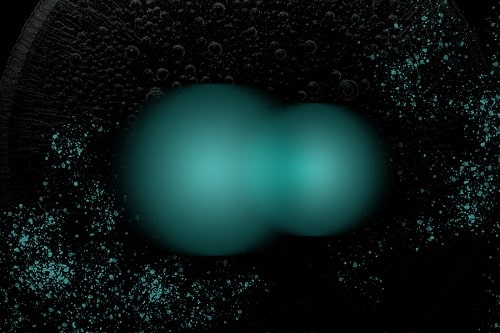Researchers claim the discovery could enable development of smaller, faster and energy-efficient electronic devices

Thanks to the tireless efforts of researchers worldwide, discoveries relating to quantum technology, photonics, superconductivity and countless other areas have continued to shape the future of electronics.
Adding to this, physicists at the Massachusetts Institute of Technology (MIT) have now come across a hybrid particle made up of electrons and phonons (a quasiparticle produced from vibrating atoms) that are bonded by a force nearly 10 times stronger than any other electron-phonon hybrid known to date.
This suggests that upon electrically exciting the hybrid particle, the change in its constituents (both electrons and phonons) lead to a consequent change in a material’s structural or magnetic properties. By leveraging this revelation, existing magnetic semiconductors can improve for faster and more energy-efficient electronics.
“Imagine if we could stimulate an electron and have magnetism respond,” says Nuh Gedik, professor of physics at MIT. “Then you could make devices very different from how they work today.”
Uncovering past mystery
In 2018, Korean researchers noticed an unusually strong coupling in nickel phosphorus trisulfide (NiPS3), a two-dimensional material known for its antiferromagnet characteristics at very low temperatures.
Upon investigating, it became clear that the material got excited when cooled further below its antiferromagnetic behaviour. At the same time, signs of the now discovered hybrid particle were also seen, though its exact nature and its relationship with the excitation were unclear.
A few years later, Gedik and the rest of the research team took upon uncovering this phenomenon. They employed an ultrafast laser camera (that emitted light pulses at 25 femtoseconds) for capturing the rapidly moving subatomic particles.
The emitted laser pulse was split into two separate pulses and aimed at a NiPS3 sample. The delay between the two pulses allowed one to stimulate the sample, while the other captured the sample’s response with a time resolution of 25 femtoseconds.
In this way, a sequence of images was generated from which the particle interactions of interest within the material were deduced.
For identifying the particle constituents, the research team varied the frequency of the first laser and found that the hybrid particle became visible when the reflected light frequency matched the light frequency observed during electron movement between two d-orbitals. The reflected light frequency also matched the energy of a phonon, thereby confirming the hybrid particle consisted of excitations of d-orbital electrons and this specific phonon.
Further modelling based on this discovery exhibited that the force binding the electron with the phonon was about 10 times stronger than other known electron-phonon types.
“One potential way of harnessing this hybrid particle is, it could allow you to couple to one of the components and indirectly tune the other,” says Batyr Ilyas, research team member from the Department of Physics, Massachusetts Institute of Technology. “That way, you could change the properties of a material, like the magnetic state of the system.”
For more details, read here






